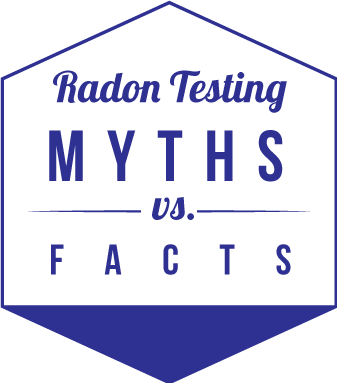Radon Testing

Everything You Need To Know About Scheduling A Radon Test
- Closed-house conditions must be to be maintained 12 hours prior to the test.
- This test period will be 48 hours and must be made under closed-building conditions.
- Closed-building conditions are necessary to stabilize the radon and radon decay product concentrations and increase the reproducibility of the measurement.
- Windows on all levels and external doors should be kept closed (except during normal entry and exit) during the measurement period.
- Normal entry and exit include a brief opening and closing of a door, but — to the extent possible — external doors should not be left open for more than a few minutes.
- In addition, external-internal air-exchange systems (other than a furnace), such as high-volume, whole-house and window fans, should not be operating.
- Attic fans intended to control attic (and not whole-building temperature or humidity) should continue to operate.
- For more information, please read the Home Buyer’s and Seller’s Guide to Radon.
Reliable Radon Testing In Kansas City & Surrounding Areas
- Any home can have a radon radiation problem!
- You cannot estimate radon levels based upon location or home design!
- Testing is the only way to know if your home has radon!
What Is Radon & Why Do Licensed Home Inspectors Test For It?
Radon gas comes from the natural breakdown of the traces of uranium in soil, rock and water. There are no symptoms from radon exposure. You cannot see radon, smell it, or even taste it.
Radon is the second leading cause of lung cancer, estimated to cause around 23,000 lung cancer deaths annually in the United States. The only lung cancer cause more dangerous than radon radiation is smoking.
This estimate from the National Academy Of Science indicates that around 1 in every 10 lunch cancer deaths may be caused by radon gas each year and that radon is 7th leading cause of all cancer.
The good news is that if your home has high levels of radon, it can be fixed!
Any Home Can Have Dangerous Levels Of Radon
You cannot estimate radon levels by neighborhood, home age, home design (on slab, crawl space or basement), energy efficiency, or even what the home next door reads. Getting a radon test is the only way to know for sure!
Download The EPA’s Home Buyer’s & Seller’s Guide To Radon
Learn More About Radon’s Health Risks
What The EPA Suggests For Home Buyers
What The EPA Suggests For Home Builders
Learn How To Lower Radon Levels In Your Home

* Information for Fact and Myth was provided by the EPA, in the January 2009 edition of Home Buyer’s and Seller’s guide to Radon. For more information on the EPA and Radon visit epa.gov/radon
